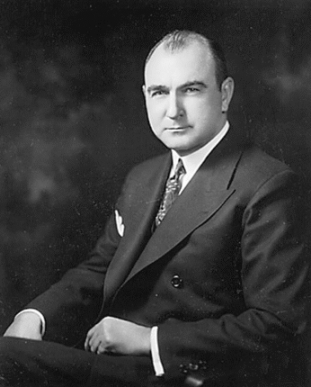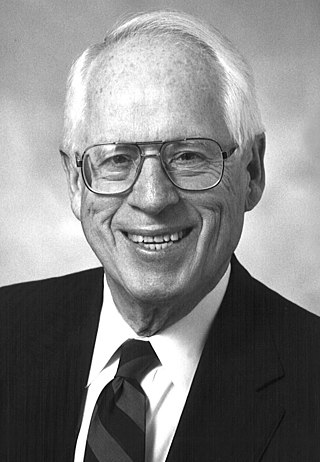Related Research Articles

The National Labor Relations Board (NLRB) is an independent agency of the federal government of the United States that enforces U.S. labor law in relation to collective bargaining and unfair labor practices. Under the National Labor Relations Act of 1935, the NLRB has the authority to supervise elections for labor union representation and to investigate and remedy unfair labor practices. Unfair labor practices may involve union-related situations or instances of protected concerted activity.
The duty of fair representation is incumbent upon Canadian and U.S. labor unions that are the exclusive bargaining representative of workers in a particular group. It is the obligation to represent all employees fairly, in good faith, and without discrimination.
An unfair labor practice (ULP) in United States labor law refers to certain actions taken by employers or unions that violate the National Labor Relations Act of 1935 29 U.S.C. § 151–169 and other legislation. Such acts are investigated by the National Labor Relations Board (NLRB).
The Graduate Student Organizing Committee (GSOC) is a labor union representing graduate teaching and research assistants at New York University (NYU).
A whipsaw strike is a strike by a trade union against only one or a few employers in an industry or a multi-employer association at a time. The strike is often of a short duration, and usually recurs during the labor dispute or contract negotiations—hence the name "whipsaw".
NLRB v. Truck Drivers Local 449 , 353 U.S. 87 (1957), is an 8-0 decision by the Supreme Court of the United States in which the Court held that a temporary lockout by a multi-employer bargaining group threatened by a whipsaw strike was lawful under the National Labor Relations Act (NLRA), as amended by the Taft-Hartley Act.
NLRB v. Mackay Radio & Telegraph Co., 304 U.S. 333 (1938), is a United States labor law case of the Supreme Court of the United States which held that workers who strike remain employees for the purposes of the National Labor Relations Act (NLRA). The Court granted the relief sought by the National Labor Relations Board, which sought to have the workers reinstated by the employer. However, the decision is much better known today for its obiter dicta in which the Court said that an employer may hire strikebreakers and is not bound to discharge any of them if or when the strike ends.
Communications Workers of America v. Beck, 487 U.S. 735 (1988), is a decision by the United States Supreme Court which held that, in a union security agreement, unions are authorized by statute to collect from non-members only those fees and dues necessary to perform its duties as a collective bargaining representative. The rights identified by the Court in Communications Workers of America v. Beck have since come to be known as "Beck rights," and defining what Beck rights are and how a union must fulfill its duties regarding them is an active area of modern United States labor law.

Lemuel Ricketts Boulware was General Electric's vice president of labor and community relations from 1956 until 1961. Boulware's business tutelage and political cultivation of Ronald Reagan from 1954 to 1962 while Reagan was a spokesman for the company is argued to have led to Reagan's conversion from New Deal-style liberalism to Barry Goldwater-style conservatism.

Wilma B. Liebman is an American lawyer and civil servant who is best known for serving as a member of the National Labor Relations Board (NLRB). She was designated chair of the board by President Barack Obama on January 20, 2009, becoming only the second woman to lead the NLRB.
National Labor Relations Board v. Sands Manufacturing Co., 306 U.S. 332 (1939), is United States labor law case, decided by a majority of 5 to 2 by the Supreme Court of the United States, which overturned a decision by the National Labor Relations Board because it was not supported by substantial evidence. The Court defined collective bargaining under the National Labor Relations Act to mean that proposals and responses to proposals were pending, and that future meetings were being planned. Absent such conditions, bargaining was not occurring. The Court also held that an employer did not violate the Act if it chose to deal with the employees on an individual basis.

John Cushman Truesdale Jr. was an American lawyer and civil servant who served two terms as executive secretary of the National Labor Relations Board, four terms as a board member, and one term as board chair.
Guy Otto Farmer was an American lawyer and civil servant. He was Chairman of the United States National Labor Relations Board from July 1953 to August 1955. After leaving government service, he represented the Bituminous Coal Operators Association, the collective bargaining arm of the bituminous coal mining industry in the United States.
National Labor Relations Board v. Yeshiva University, 444 U.S. 672 (1980), is a US labor law case, concerning the scope of labor rights in the United States.
South Prairie Construction Co. v. Local No 627, International Union of Operating Engineers, AFL-CIO, 425 U.S. 800 (1976), is a US labor law case, concerning the scope of labor rights in the United States.
JI Case Co. v. National Labor Relations Board, 321 U.S. 332 (1944), is a United States Supreme Court case dealing with labor law. Workers at the company's factory had voted to unionize, but J.I. Case Company had refused to negotiate with the new union, and tried to enforce old contracts instead. The court upheld the NLRB's decision that they'd violated the National Labor Relations Act, but said that the NLRB had to re-word the order it had issued.
Golden State Transit Corp v City of Los Angeles, 475 U.S. 608 (1986), is a US labor law case, concerning the scope of federal preemption against state law for labor rights.
The International Union of Electrical Workers (IUE) was a North American labor union representing workers in the electrical manufacturing industry. While consistently using the acronym IUE, it took on several full names during its history originally the International Union of Electrical, Radio and Machine Workers and after 1987, the International Union of Electronic, Electrical, Technical, Salaried, Machine and Furniture Workers.
The 1969–1970 General Electric strike was a nationwide labor dispute between General Electric and its workers as represented by the AFL–CIO affiliated International Union of Electrical Workers (IUE) and the independent United Electrical Workers (UE). Involving 164,000 workers on average, it was the largest and most impactful strike in North America in 1969 in terms of the number of days lost. It began on October 27, 1969, and was won by the workers after 102 days on the picket line. The strike brought together the two rival unions in the most meaningful way since UE was expelled from the Congress of Industrial Organizations (CIO) in 1949.
A captive audience meeting is a mandatory meeting during working hours, organized by an employer with the purpose of discouraging employees from organizing or joining a labor union. It is considered a union busting tactic. Critics allege that captive audience meetings are used to intimidate workers and spread misinformation; employees can be fired for failing to participate in the meeting or for asking questions. In the United States, the National Labor Relations Act of 1935 (NLRA) broadly permits captive audience meetings but does not allow them to be held in the final 24 hours prior to a union election. Employers defend the practice as protected free speech; critics view the practice as an infringement on workers' rights not to listen.
References
Footnotes
- ↑ "boulwarism". lsd.law. LSData Law school application advice and resources. 2024. Retrieved 7 April 2024.
- 1 2 3 4 Roberts, Harold S. (1986). Roberts’ Dictionary of Industrial Relations (3rd ed.). Washington D.C.: Bureau of National Affairs. pp. 76–77.
- ↑ Gitomer, Charles Jay (June 1965). "Boulwarism: the philosophy and the method from 1949 to 1960 [BSc thesis]" (PDF). dspace.mit.edu. Massachusetts Institute of Technology. Retrieved 7 April 2024.
- 1 2 3 4 Schmidt, Emerson P. (Fall 1970). "The Truth About Boulwarism" (PDF). The Intercollegiate Review : 63–65. Retrieved April 28, 2013.
- 1 2 Boulware, Lemuel R. (1969). The Truth About Boulwarism: Trying to Do Right Voluntarily . Washington D.C.: Bureau of National Affairs. pp. 80–85.
- ↑ Perlstein, Rick (January 5 – April 1, 2007). "Boulwarism". The New Republic . Ocnus.net. Archived from the original on 2013-10-03. Retrieved April 28, 2013.
- 1 2 General Electric Co., 150 NLRB 192, 194-95, 57 LRRM 1491 (1964), enforced, 418 F.2d 736, 756-57 (2d Cir. 1969), cert. denied, 397 U.S. 965, 90 S.Ct. 995, 25 L.Ed.2d 257 (1970)
- ↑ Williams, Lindsey (December 22, 1964). "NLRB Kills Boulwarism And Closes An Era" . Retrieved April 28, 2013.
Sources
- Perlstein, Rick (January 5 – April 1, 2007). "Boulwarism". The New Republic . Ocnus.net. Archived from the original on 2013-10-03. Retrieved April 28, 2013.
- Roberts, Harold Selig (1986). Roberts’ Dictionary of Industrial Relations (3rd ed.). Washington D.C.: Bureau of National Affairs. pp. 76–77.
- Schmidt, Emerson P. (Fall 1970). "The Truth About Boulwarism" (PDF). The Intercollegiate Review : 63–65. Retrieved April 28, 2013.
- Williams, Lindsey (December 22, 1964). "NLRB Kills Boulwarism And Closes An Era" . Retrieved April 28, 2013.
- "The impact of "Boulwarism"". kosscountry.com. Archived from the original on July 13, 2011. Retrieved April 28, 2013.